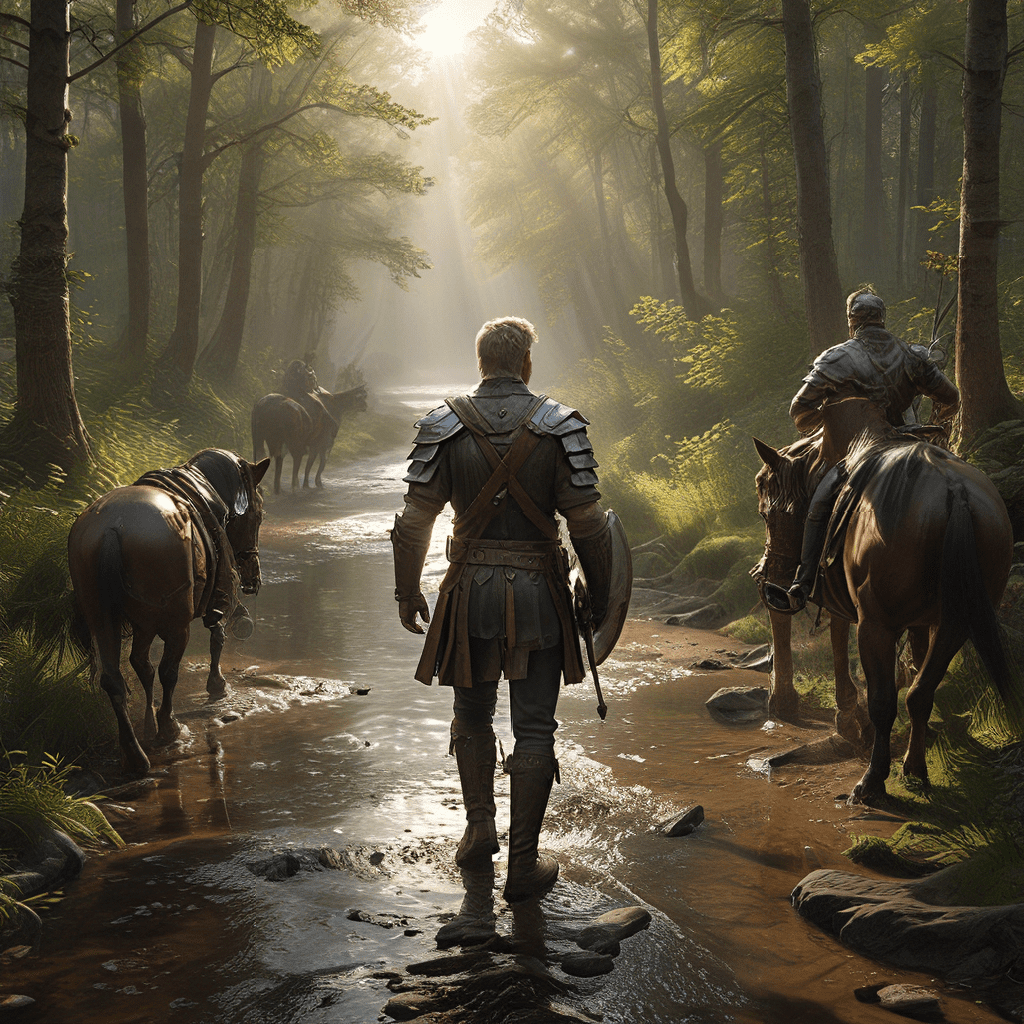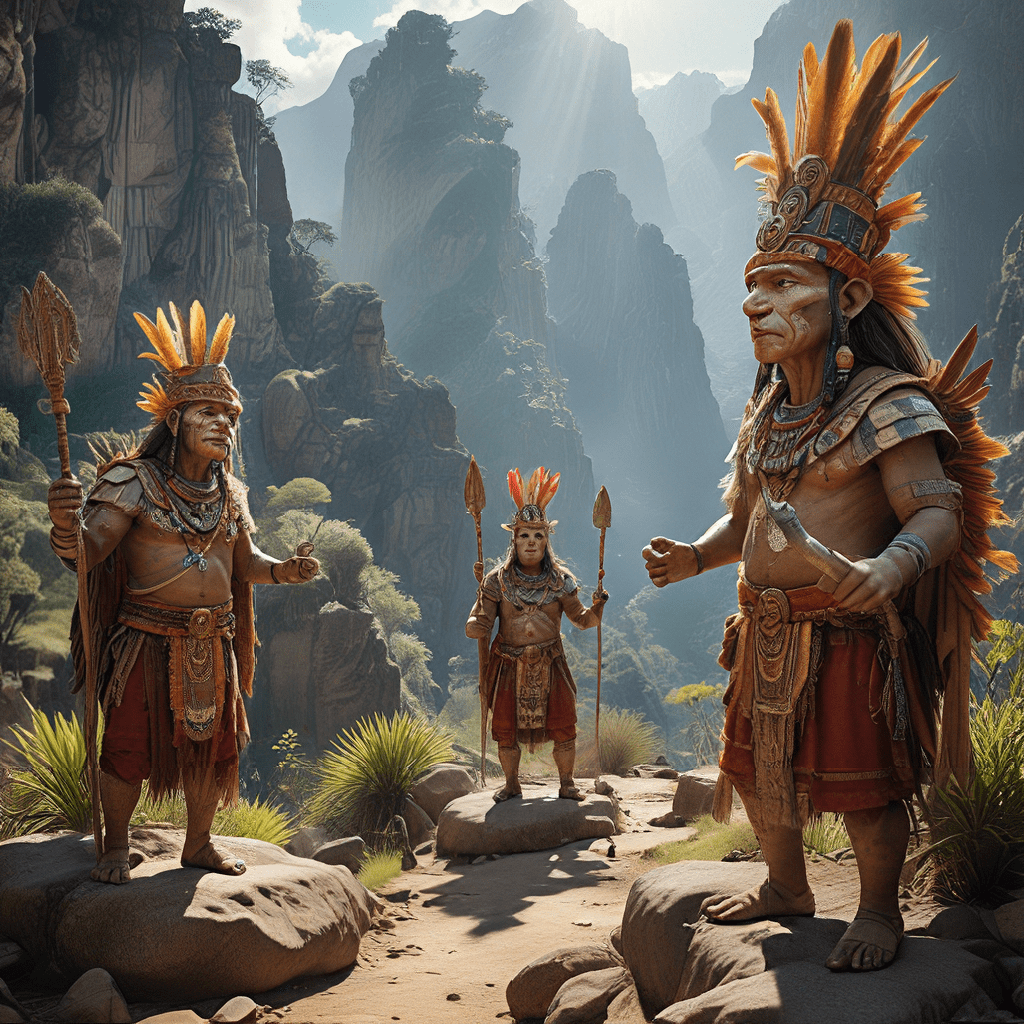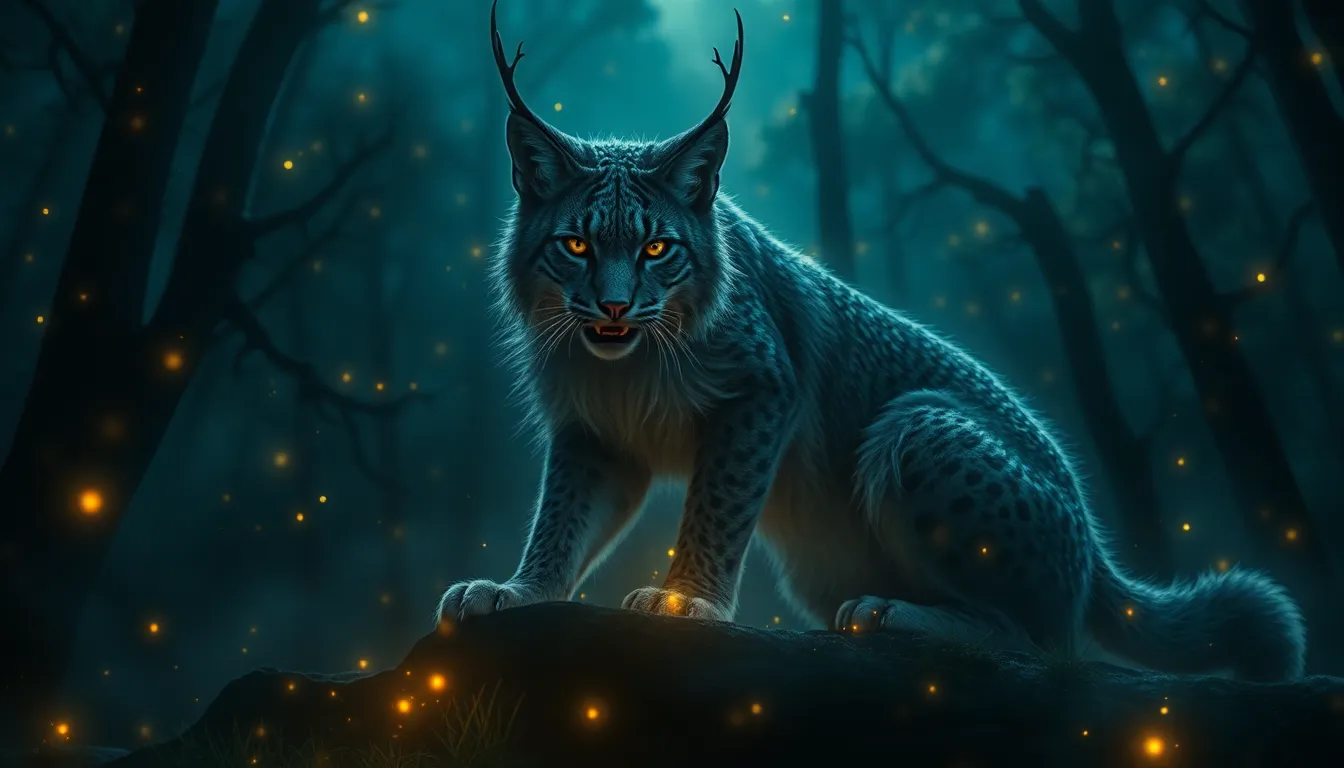The Baltic Pantheon: A Tapestry of Gods and Goddesses
The Baltic pantheon of gods and goddesses is a fascinating and complex tapestry of ancient beliefs and traditions. These deities were profoundly important to the ancient Baltic people, shaping their understanding of the world, their beliefs about life and death, and their daily rituals.
The Baltic pantheon includes both benevolent and malevolent deities, each with their own unique role and significance in the cosmic order.
The most prominent male deity was Perkūnas, the thunder god. Perkūnas was considered the protector of justice and order, and he was believed to wield a mighty hammer that could summon lightning bolts. Other significant deities include:
- Dievs: The Sky God, representing the heavens and the power of the universe.
- Saule: The Sun Goddess, bringing light and warmth to the world.
- Mėnulis: The Moon God, symbolizing night and the cycle of the seasons.
- Laima: The Goddess of Fate, who determined the destiny of individuals.
- Velnias: The Devil, representing evil and chaos.
The Baltic pantheon reflected the natural world and the forces of nature, emphasizing the importance of harmony and balance.
From Myth to Legend: The Evolution of Baltic Hero Tales
The ancient myths and legends of the Baltic peoples were passed down through generations in an oral tradition. These stories were rich in symbolism and meaning, reflecting the values and beliefs of the people who created them. The stories often featured heroes who embodied the ideals of courage, strength, and wisdom.
Over time, these myths evolved into legends and folk tales, with elements of history, folklore, and fantasy interweaving to create a rich and vibrant tapestry of storytelling.
The Baltic region was a melting pot of cultures, and its myths were influenced by the interactions of different peoples. Viking legends and Norse mythology left their mark on Baltic tales, adding elements of magical creatures, epic battles, and heroic feats.
The Hero’s Journey: Common Themes and Motifs in Baltic Mythology
Baltic hero tales often follow the classic pattern of the hero's journey, a narrative archetype found in stories across cultures.
The hero's journey typically involves a series of stages:
-
The Departure: The hero leaves their ordinary world and embarks on a quest.
-
The Initiation: The hero faces challenges and trials, often in the form of monsters or supernatural beings.
-
The Return: The hero returns to their world transformed by their experiences, bringing new knowledge and wisdom.
Common themes and motifs found in Baltic hero tales include:
-
The Triumph of Good Over Evil: Heroes typically battle against dark forces, representing the struggle between good and evil.
-
The Importance of Courage and Strength: Heroes are often portrayed as brave and strong, willing to confront danger and adversity.
-
The Power of Nature: Nature plays a significant role in Baltic mythology, with heroes often relying on the forces of nature to aid them in their quests.
The Triumph of Good Over Evil: Overcoming Challenges and Defeating Monsters
Baltic hero tales often feature epic battles between heroes and monstrous creatures, symbolizing the struggle between good and evil. These monsters, often born from darkness, chaos, or the forces of nature, represent the threats that challenge the hero's heroic values and the world's balance.
These heroes confront the challenges with courage, strength, and often, the aid of supernatural powers. They use their wit and cunning to outsmart their enemies, and in doing so, they demonstrate their heroic qualities.
These battles are often symbolic of the hero's inner journey, as they confront their own fears and weaknesses to overcome the monstrous obstacles in their path. Their triumph represents the victory of light over darkness and the restoration of order.
Examples of these heroic battles include:
- The slaying of the serpent:' A recurring theme in Baltic hero tales, symbolizing the hero's victory over chaos and evil.
- The defeat of the giant: Representing the hero's ability to overcome overwhelming odds and forces.
- The vanquishing of the dragon: A mythical creature symbolizing the hero's fight against destructive forces.
The Role of Fate and Destiny in Baltic Hero Myths
Fate and destiny play a significant role in Baltic hero myths, shaping the lives and actions of the heroes.
The concept of Laima, the Goddess of Fate, was central to Baltic beliefs. Laima was believed to spin the threads of destiny, determining the course of each individual's life.
Some hero myths depict how characters confront their predetermined fates, often with tragic outcomes. These stories highlight the hero's struggle against the forces of destiny, demonstrating their courage and resilience in the face of unavoidable events.
However, other stories depict heroes who shape their own destinies through their actions and choices. These heroes often overcome their predetermined fates, demonstrating the possibility of free will and the power of human agency.
The exploration of fate and destiny is a recurring theme in Baltic hero tales, reminding us that our lives are a combination of predetermined paths and our own choices.
The Importance of Sacrifice and Selflessness in Baltic Heroic Tales
Sacrifice and selflessness are recurring themes in Baltic hero myths, highlighting the importance of putting the needs of others before one's own. These heroes are often willing to risk their lives or endure great hardships to protect their people, defeat evil, or restore balance to the world.
Heroes often make personal sacrifices, often relinquishing comfort, safety, or even loved ones to fulfill their destinies. These sacrifices are not always celebrated or acknowledged but are understood as essential to the hero's journey. Their selflessness is a testament to their commitment to the greater good.
Examples of sacrifice in Baltic myths include:
-
The hero who willingly gives up their life to save their people: These heroes choose to die rather than see their loved ones or their community suffer.
-
The hero who sacrifices their happiness for the sake of their duty: These heroes put aside their personal desires to fulfill their obligations to their people or their gods.
-
The hero who endures great pain and suffering to achieve their goal: These heroes show resilience and fortitude, demonstrating that even the most difficult sacrifices are worthwhile if they lead to a greater good.
These acts of sacrifice and selflessness are not simply acts of bravery; they are powerful demonstrations of the hero's values and their commitment to a higher purpose. They inspire others to emulate their example, reminding us that true heroism often requires self-sacrifice.
The Power of Nature: The Influence of Forests, Seas, and Mountains
Nature plays a vital role in Baltic mythology, shaping the landscape and influencing the lives of its inhabitants. The hero's journey is often set against a backdrop of expansive forests, majestic mountains, and powerful seas, each holding symbolic meanings and influencing the narrative.
The forests, often dark and mysterious, symbolize both the unknown and the source of life. They are home to powerful spirits, supernatural creatures, and the ancient wisdom of the land. Heroes often rely on the forests for shelter, sustenance, and wisdom, seeking guidance from the spirits who inhabit them.
The seas, vast and unpredictable, embody the forces of change and the unknown. They are often depicted as powerful and dangerous, capable of both nurturing and destroying. Heroes journey across the seas, facing storms, treacherous currents, and mythical sea creatures, showcasing their resilience and their connection to the natural world.
The mountains, rugged and imposing, represent strength, endurance, and the connection to the divine. They are often seen as sacred places, home to gods and spirits, and serve as places of pilgrimage and contemplation. Heroes often seek refuge in the mountains, finding solace and inspiration in their solitude.
The Baltic people understood their connection to nature, and their myths reflect that deep respect and understanding. They viewed nature not only as a source of awe but also as a force that could guide, challenge, and ultimately, shape their destinies.
The Role of Magic and Supernatural Powers in Baltic Hero Myths
Magic and supernatural powers play a significant role in Baltic hero myths, shaping the narratives and influencing the actions of heroes. These powers, often granted by gods or spirits, allow heroes to overcome challenges, defeat enemies, and achieve their goals.
One common source of magic is the use of enchanted objects:
- Magical weapons: Swords, axes, and other weapons imbued with supernatural powers increase the hero's strength and effectiveness in battle.
- Amulets and charms: Small objects worn for protection, often granted by gods or spirits, provide the hero with supernatural strength, resilience, or invisibility.
- Magical potions and herbs: These special concoctions grant temporary abilities, such as increased strength, healing, or the ability to communicate with animals.
Another common source of supernatural powers is the ability to communicate with or manipulate the forces of nature:
- Control over the elements: Heroes might summon storms, manipulate the flow of water, or create earthquakes to achieve their goals.
- Shape-shifting: The ability to change form, allowing the hero to blend in with their surroundings or assume the form of a powerful animal.
- Communication with spirits: Heroes might seek guidance from the spirits of the forest, the sea, or the mountains, receiving wisdom, knowledge, or assistance.
These magical abilities are not always used for benevolent purposes. Some heroes wielding magic might exploit it for personal gain or use it to manipulate others. The use of magic in Baltic myth reflects the belief that power can be both a force for good and for evil, reminding us of the importance of using power responsibly.
The Legacy of Baltic Heroes: Influence on Folklore and Culture
Baltic hero tales continue to influence art, literature, and folklore in the region. These stories have been transmitted through generations, shaping the culture and identity of the Baltic people.
The heroes of these tales are not only figures from the past but also serve as models for contemporary society:
-
Symbolism of courage and resilience: The heroes' stories highlight the importance of facing challenges with strength and courage.
-
Inspiration for artistic expression: Baltic hero tales have inspired countless works of art, music, and literature, often reinterpreted for modern audiences.
-
Preservation of cultural heritage: These stories contribute to the preservation of Baltic language, traditions, and history, reminding people of their cultural roots.
Baltic hero tales are not simply tales of the past; they are dynamic and evolving narratives that continue to resonate with modern audiences. These stories offer valuable lessons about courage, resilience, and the importance of community, reminding us of the enduring power of these ancient narratives.
Exploring the Theories of Baltic Hero Myths: Historical, Linguistic, and Cultural Perspectives
The origins of Baltic hero myths are complex and multifaceted, involving interactions of historical, linguistic, and cultural factors. Understanding these influences provides a deeper understanding of the stories themselves and the people who created them.
Historical Perspectives: Historical events, such as migrations, wars, and the rise and fall of empires, often influence the development of myths. These events could be reflected in the stories, shaping the heroes, the monsters, and the conflicts that drive the narrative.
Linguistic Perspectives: Linguistics plays a crucial role in understanding the origins of the stories. The similarities between Baltic languages and other Indo-European languages help researchers trace the roots of these stories, revealing potential connections to other mythologies.
Cultural Perspectives: Analyzing the stories through a cultural lens helps researchers understand the values, beliefs, and social structures of the Baltic people. The myths often reflect societal norms, beliefs about the natural world, and spiritual practices.
By combining these diverse perspectives, researchers gain a more comprehensive understanding of the origins and meaning of Baltic hero myths. It is through these different lenses that we can truly appreciate the complexity of these stories and their enduring relevance.
FAQ
What are some famous Baltic heroes?
Some of the well-known heroes from Baltic mythology include:
* **Aido:** A brave hunter and warrior, known for his strength and skill
* **Jūratė:** A sea goddess who fell in love with a mortal fisherman
* **Kastytis:** A legendary king who fought against the invasion of the Teutonic Knights
* **Žilvinas:** A hero who saved his people by battling against a monstrous sea serpent
* **Vytis:** A mythical warrior who represents courage and strength, often depicted as a knight on horseback
How did Baltic myths influence the culture of the region?
Baltic myths heavily influenced the culture of the region, shaping:
* **Art and Literature:** The heroes, monsters, and stories from these myths were often depicted in paintings, sculptures, and literature, continuing to inspire artists today.
* **Folk Music and Dance:** Many traditional songs and dances in the Baltic region were based on these myths, celebrating heroes and the forces of nature.
* **Religious Beliefs:** These myths offered explanations for natural phenomena and the forces of the universe, shaping the beliefs of the ancient Baltic peoples.
What are some of the key themes in Baltic hero myths?
Some key themes that recur in Baltic hero myths include:
* **Triumph of Good Over Evil:** Heroes often battle against monstrous creatures or forces of darkness, symbolizing the struggle between good and evil.
* **Importance of Courage and Strength:** Heroes are typically portrayed as brave, strong, and willing to confront danger and adversity.
* **Power of Nature:** Nature plays a significant role in these myths, often depicted as a force that can both aid and challenge the heroes.
* **Fate and Destiny:** The concept of fate and destiny plays a significant role, shaping the lives of the heroes and influencing their choices.
* **Sacrifice and Selflessness:** These heroes often make sacrifices for the greater good or the well-being of their people.
* **Magic and Supernatural Powers:** Many heroes possess magical abilities or are granted supernatural powers, allowing them to overcome challenges and defeat enemies.
How do Baltic hero myths compare to other mythologies?
Baltic hero myths share similarities with other mythologies, such as the Norse and Greek myths, often featuring themes such as the hero’s journey, the struggle between good and evil, and the importance of courage and sacrifice. However, Baltic myths also have unique elements focusing on the importance of nature, the role of fate, and the power of magic.




